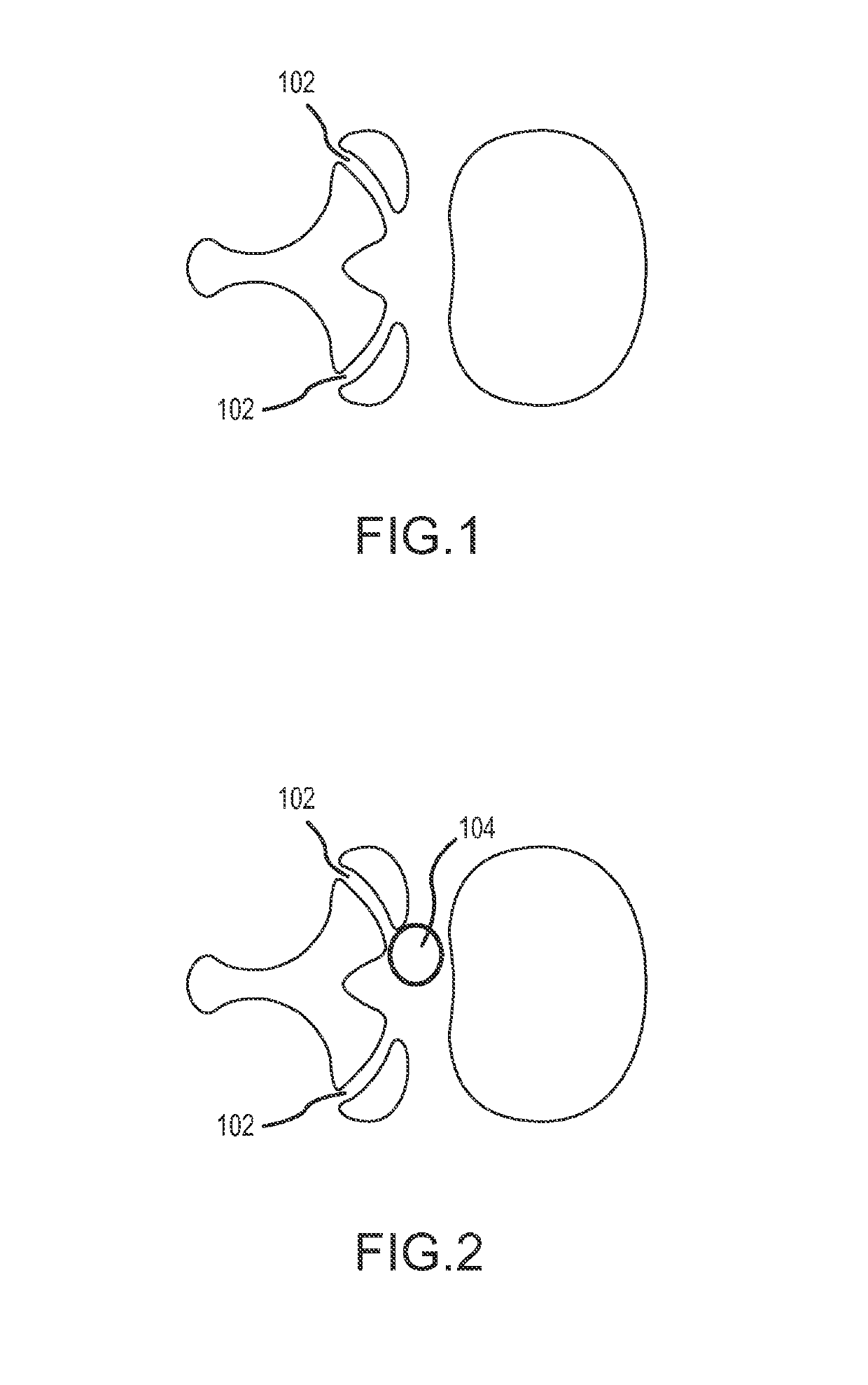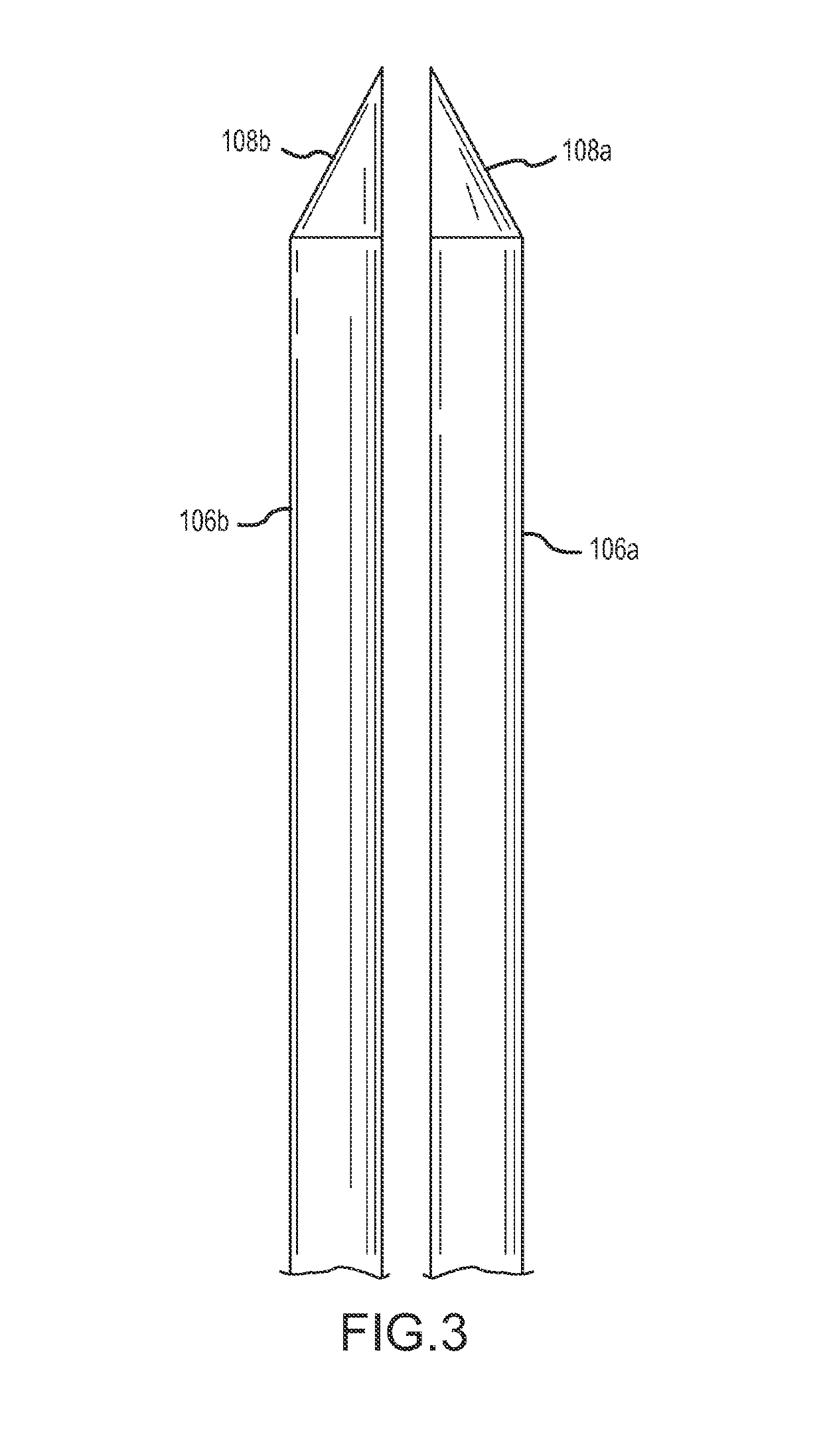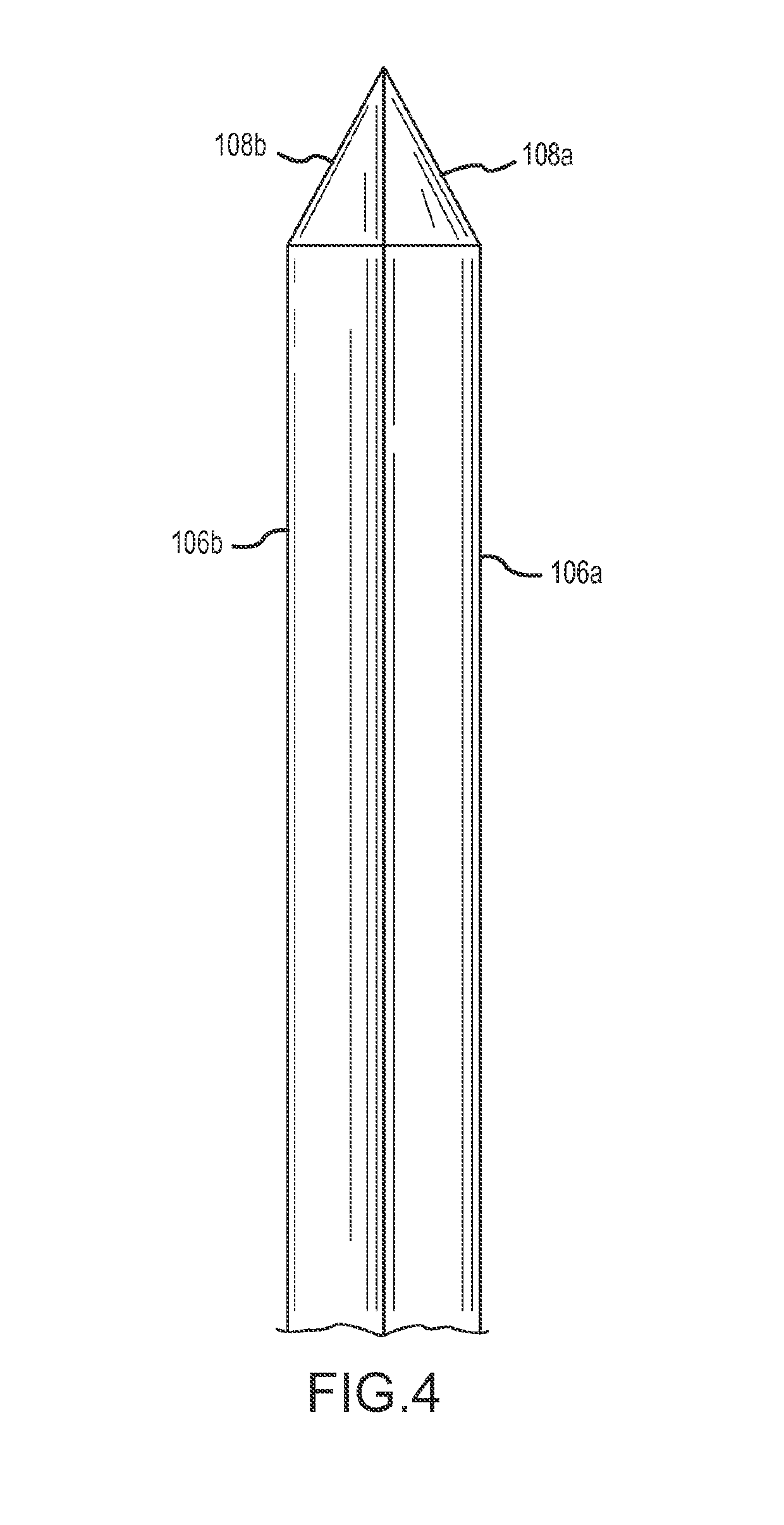Devices, kits and methods relating to treatment of facet joints
a facet joint and kit technology, applied in the field of spine and facet joints, can solve the problems of spinal instability, cysts along the back of the joints, surgery damage to surrounding tissues, etc., and achieve the effect of preventing tissue coring
- Summary
- Abstract
- Description
- Claims
- Application Information
AI Technical Summary
Benefits of technology
Problems solved by technology
Method used
Image
Examples
Embodiment Construction
[0068]For a more complete understanding of the invention and aspects thereof, reference is now made to the following Detailed Description taken in conjunction with the figures.
[0069]In one embodiment, an access device is formed by two elongated round hollow metal tubes of circular cross-section. The ends of the tubes may be cut at an angle. The tube edges may be sharpened, such as a pointed tip of a spinal needle or hypodermic needle. The two tubes may be inserted through and constrained by a smooth outer sheath. Thus the outer sheath may be oval shaped in cross section and rigid. The rigid sheath may prevent the tubes from crossing or overlapping during insertion or rotation of the tubes. The sheath may be sized to allow the tubes to freely rotate. Before the access device is inserted into the skin and deep tissues, the angled ends of the tubes may first be rotated to face in opposite directions. The two sharpened edges may now form a single blade-like surface. For convenience such...
PUM
 Login to View More
Login to View More Abstract
Description
Claims
Application Information
 Login to View More
Login to View More - R&D
- Intellectual Property
- Life Sciences
- Materials
- Tech Scout
- Unparalleled Data Quality
- Higher Quality Content
- 60% Fewer Hallucinations
Browse by: Latest US Patents, China's latest patents, Technical Efficacy Thesaurus, Application Domain, Technology Topic, Popular Technical Reports.
© 2025 PatSnap. All rights reserved.Legal|Privacy policy|Modern Slavery Act Transparency Statement|Sitemap|About US| Contact US: help@patsnap.com



